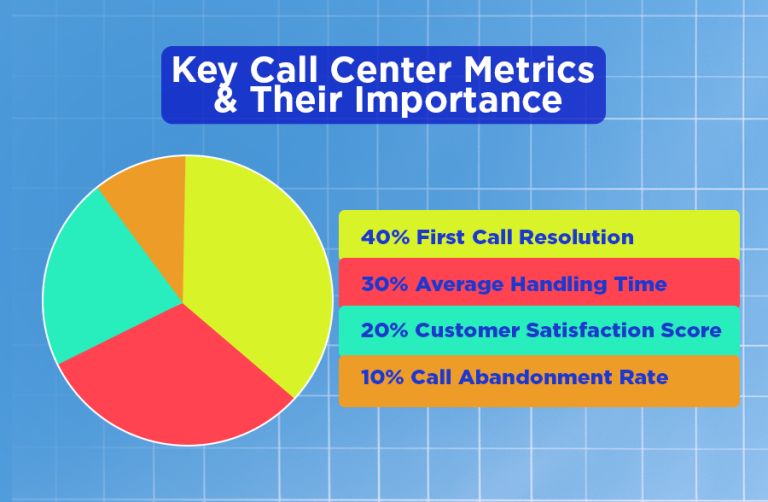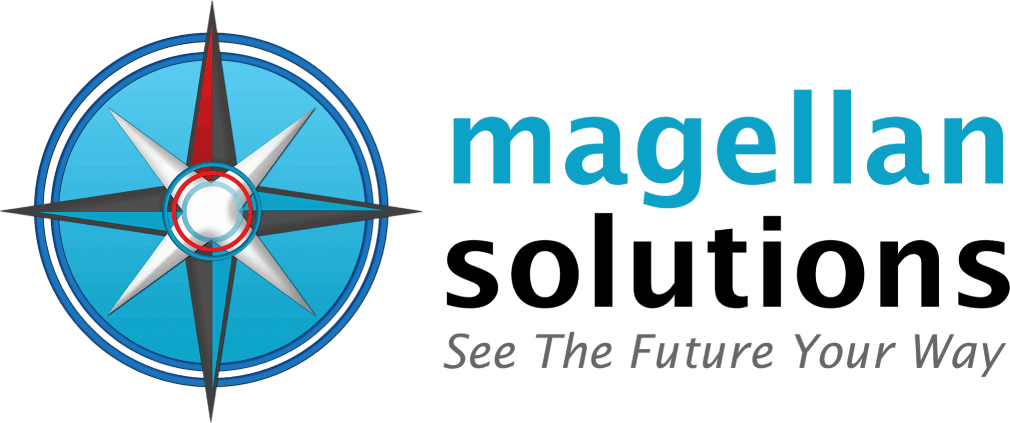Schedule a FREE call with our outsourcing expert now and get a precise quotation that meets your requirements. Don't wait - get started today!
How many calls does your business handle daily? If you don’t have a clear answer, you might be missing out on valuable insights. Tracking “calls handled” metrics is not just about counting phone calls. It’s about understanding how well your team manages customer interactions, resolves issues, and keeps service levels high.
For small and medium-sized enterprises (SMEs), every call matters. Whether it’s an inbound inquiry or an outbound follow-up, efficient call handling can impact customer satisfaction, team productivity, and even business growth. A missed call could mean a lost sale, while a delayed response might frustrate a loyal customer.
But here’s the challenge—measuring and improving call handling isn’t as simple as picking up the phone. It involves tracking key metrics like the number of calls answered, average handling time (AHT), and overall call volume. Without these insights, businesses risk inefficiencies that can slow them down.
So, how can you optimize call handling to boost efficiency? Let’s break it down.
Understanding “Calls Handled” Metrics
“Calls handled” refers to the total number of calls managed by your call center agents within a specific timeframe. This includes both inbound and outbound calls. Monitoring this metric helps SMEs assess their call center’s capacity and performance.
Did you know that 90% of customers rate an “immediate” response as important when they have a customer service question? Tracking the number of calls answered and resolved quickly can directly impact customer satisfaction.
Key Metrics to Pair with Calls Handled
While calls handled is a great starting point, it’s even more powerful when paired with other metrics. These key performance indicators (KPIs) provide deeper insights into customer interactions, agent productivity, and overall call center efficiency. By analyzing them together, businesses can make informed decisions to improve operations.
1. Service Level: Are You Meeting Customer Expectations?
Service level measures the percentage of calls answered within a specific time frame. For example, if your goal is to answer 80% of calls within 20 seconds, this metric tells you whether you’re meeting that target. A low service level could mean long wait times, which frustrate customers and lead to abandoned calls.
Monitoring this metric helps ensure that response times align with customer expectations, leading to better satisfaction.
2. Average Handling Time (AHT): Balancing Speed and Quality
AHT tracks the total time spent on a call, including talk time and after-call work. While shorter calls may suggest efficiency, rushing conversations can lead to poor resolutions and repeated calls. On the other hand, long calls may indicate complex issues or inefficiencies in call handling.
The goal is to strike a balance—resolving issues quickly while maintaining high-quality customer service. Businesses that optimize AHT often see improvements in customer satisfaction and agent workload management.
3. Call Volume: Understanding Demand
Call volume refers to the total number of calls received within a given period. Analyzing this alongside calls handled helps businesses spot trends, such as peak hours or seasonal fluctuations. A sudden spike in call volume could signal a product issue or increased customer interest, while a drop may indicate lower engagement. Understanding these patterns allows businesses to allocate resources effectively and ensure they’re always prepared for demand.
4. Outbound Calls Handled: Don’t Forget Proactive Outreach
Not all business calls are inbound. Outbound calls handled include follow-ups, sales calls, appointment confirmations, and customer outreach. Tracking this metric helps businesses measure the effectiveness of their proactive engagement strategies.
For example, a sales team making outbound calls can assess how many lead-to conversions, while a customer service team can track follow-ups to ensure customer issues are fully resolved. Prioritizing outbound call management strengthens relationships and boosts overall business growth.
Turning Data into Actionable Insights
Collecting data is one thing. Using it to improve your business is another. Simply tracking calls handled won’t drive results unless you analyze the numbers and implement changes. Here’s how you can transform raw data into strategies that improve efficiency, customer service, and overall business performance.
-
Identify Bottlenecks in Your Call Center Operations
Are there specific times when calls go unanswered? Or are certain agents struggling with average handling time (AHT)? By reviewing your calls handled data, you can identify patterns that indicate inefficiencies. It may be a staffing issue if many calls are abandoned during lunch hours.
If certain agents consistently take longer to resolve issues, they might need additional support or tools. Identifying these bottlenecks allows businesses to make adjustments before they impact customer satisfaction.
-
Train Your Team Based on Metrics
Use your findings to provide targeted training that enhances performance. For example, if AHT is too high, training sessions can focus on improving efficiency without compromising customer experience. If service level metrics show that calls aren’t being answered quickly, agents may need better time management strategies.
Real-world data helps managers personalize training programs, making them more effective than general coaching sessions. When employees are well-trained, they feel more confident, leading to smoother interactions with customers.
-
Optimize Staffing Based on Call Volume Trends
If your data reveals peak call hours, adjust your staffing schedules accordingly. Businesses that schedule shifts based on call volume can ensure enough agents are available when demand is high, reducing wait times and abandoned calls.
Similarly, reallocating resources can prevent overstaffing and unnecessary labor costs if call volume drops during certain hours. This data-driven approach not only improves customer service but also helps businesses manage their workforce more efficiently.
-
Enhance Customer Experience with Data-Driven Decisions
Customers expect quick, efficient, and helpful support. You can pinpoint areas that need improvement by analyzing calls handled alongside service level and resolution rates. Are customers hanging up due to long wait times? Are repeated calls happening because issues aren’t fully resolved?
Addressing these gaps ensures that customers receive the support they need without frustration. A seamless customer experience builds trust, encourages loyalty, and ultimately strengthens your brand reputation.

The Impact of Call Volume on SMEs
Call volume—the total number of incoming and outgoing calls—directly affects an SME’s resources and customer service quality. High call volumes can overwhelm staff, leading to longer wait times and decreased customer satisfaction. On the other hand, low call volumes may indicate missed opportunities for engagement, sales, or customer support. Understanding these fluctuations is essential for optimizing operations and maintaining a positive customer experience.
A. Managing Call Volume
-
Staffing Adjustments: Ensure adequate staffing during peak hours to handle increased call volume. If too few agents are available, customers may abandon calls, leading to lost business and frustration. Proper workforce planning ensures that no customer inquiry goes unanswered.
-
Efficient Scheduling: Use call volume data to schedule shifts that align with busy periods. If Mondays and lunch hours consistently see higher call traffic, adjusting employee schedules accordingly can prevent service delays and burnout among agents.
-
Technology Integration: Implement automated systems to manage routine inquiries, freeing agents for complex issues. AI-driven chatbots and IVR (Interactive Voice Response) can handle FAQs, appointment scheduling, and basic troubleshooting, allowing human agents to focus on more personalized support.
Effective call volume management ensures that customer service remains consistent, even during busy times. By proactively planning for fluctuations, SMEs can maintain service quality without overburdening their teams.
B. Enhancing Customer Satisfaction Through Call Metrics
Customer satisfaction is closely tied to how effectively calls are handled. Metrics such as calls handled, service level, and average handling time (AHT) provide insights into performance and areas for improvement. However, beyond the numbers, understanding the quality of interactions is just as important. Businesses that focus on both efficiency and engagement create a better experience for customers, leading to stronger relationships and long-term loyalty.
C. Analyzing Call Transcripts for Common Pain Points
Reviewing call transcripts can reveal recurring issues that need addressing. If multiple customers complain about unclear billing policies or product confusion, these areas may require clearer communication. Identifying patterns in customer concerns helps businesses proactively resolve problems, reducing repeat calls on the same issues.
-
The Role of Customer Feedback in Improving Call Handling
Direct feedback from customers can highlight areas for improvement that metrics alone might miss. While data can show how many calls were handled, only customer input can reveal how callers felt about the experience. Were they satisfied with the support? Did they feel rushed or ignored? Gathering feedback through post-call surveys or direct conversations provides valuable insights into service quality.
-
Identifying Trends in Customer Emotions During Calls
Are customers frequently frustrated or confused? Understanding emotions can help you tailor your approach. If many callers express irritation about long wait times or repetitive verification steps, refining these processes can improve satisfaction. Speech analytics tools can even detect stress levels in voice patterns, allowing businesses to adjust their tone and service strategies accordingly.
-
Using Call Recordings to Train and Empower Agents
Listening to real calls can provide practical examples for training and improving performance. Agents can learn from both successful interactions and challenging cases, helping them refine their communication skills. Reviewing recorded calls also ensures that employees understand company policies and follow best practices when handling customer concerns.
By combining quantitative data with qualitative insights, SMEs can create a well-rounded approach to customer service. The goal isn’t just to handle more calls—it’s to ensure each call adds value to the customer experience.
Integrating Calls Handled Metrics with Other Business Systems
Your call center doesn’t operate in isolation. Integrating these metrics with other systems can unlock new efficiencies and provide deeper insights into customer behavior, sales performance, and operational effectiveness. By linking call data with key business functions, companies can enhance decision-making and streamline workflows.
1. Linking Call Data with CRM Systems
Connecting call metrics to your CRM helps you track customer interactions more effectively. When call details—such as resolution time, customer concerns, and agent notes—are recorded within the CRM, it creates a complete history of each customer’s journey.
This allows agents to provide personalized support, reducing repetition and frustration for customers. Additionally, managers can analyze trends in inquiries and tailor follow-up strategies accordingly.
2. Using Calls Handled Data to Improve Marketing Strategies
Call insights can reveal which marketing campaigns are driving the most inquiries. If a surge in calls follows a specific ad campaign, you know it’s generating interest. By tracking which keywords, promotions, or channels prompt the most customer engagement, businesses can refine their marketing approach.
Additionally, analyzing call outcomes—such as whether inquiries lead to conversions—helps measure campaign effectiveness beyond just website clicks or ad impressions.
3. Aligning Call Metrics with Sales Goals
Use call data to identify high-performing agents and replicate their success across the team. Metrics such as call-to-sale conversion rates and customer retention through phone support can pinpoint strategies that work. By studying top agents’ approaches—whether it’s their tone, script usage, or problem-solving techniques—managers can develop targeted training programs to boost overall sales performance.
Call trends can also help businesses refine their sales tactics, focusing efforts on the most responsive customer segments.
4. How Calls Handled Metrics Can Inform Product Development
Customer complaints or questions during calls can highlight areas for product or service improvement. If multiple customers struggle with a feature or request a missing function, this feedback can guide development teams. Tracking the frequency of specific issues over time helps businesses prioritize updates and enhancements.
Additionally, understanding customer concerns through direct interactions allows companies to refine product messaging, ensuring clearer communication about features and benefits.
Strategies for SMEs to Improve “Calls Handled” Metrics
Improving call handling metrics requires a strategic approach tailored to an SME’s needs.
Training and Development
- Regular Workshops: Equip agents with the skills to handle various customer scenarios efficiently.
- Performance Feedback: Provide constructive feedback to help agents improve their handling times and service quality.
Technology Utilization
- Customer Relationship Management (CRM) Systems: Streamline information access, allowing agents to assist customers more effectively.
- Automated Call Distribution (ACD): Distribute incoming calls to the most suitable agents, reducing wait times.
Outsourcing Opportunities
Partnering with specialized call center services can offer SMEs access to trained professionals and advanced technologies without significant investments. This approach can enhance service levels and customer satisfaction.
Turn Calls into Growth!
Are you struggling to keep up with call volume or improve customer satisfaction? At Magellan Solutions, we specialize in helping SMEs like you track and optimize calls handled metrics. From increasing the number of calls answered to reducing average handling time (AHT), we provide solutions tailored to your needs.
Book your FREE 60-minute business consultation today. Let’s plan how to improve your call center—NO COMMITMENTS, just clear, actionable advice!
We’ll help you identify bottlenecks, improve service levels, and ensure more outbound calls are handled effectively. We aim to help you create a smoother, more efficient call center that delivers a great customer experience.
Don’t let missed calls or inefficiencies hold you back. Start improving your operations today—contact us now!
















